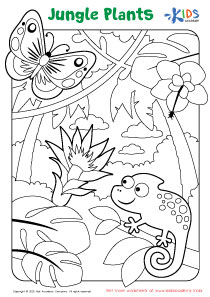Animal Classification Animals Worksheets for Ages 6-9
7 filtered results
-
From - To
Explore our engaging Animal Classification Worksheets designed specifically for children aged 6-9! These fun, interactive worksheets help young learners understand the diverse world of animals, focusing on their various classifications such as mammals, birds, reptiles, and more. By completing our worksheets, kids will enhance their observation and critical thinking skills while discovering interesting animal facts. Perfect for home or classroom use, our resources make learning about animals enjoyable and educational. Foster a love for science and nature in your child with our thoughtfully crafted materials that cater to their developing minds. Download now and embark on an exciting animal adventure!
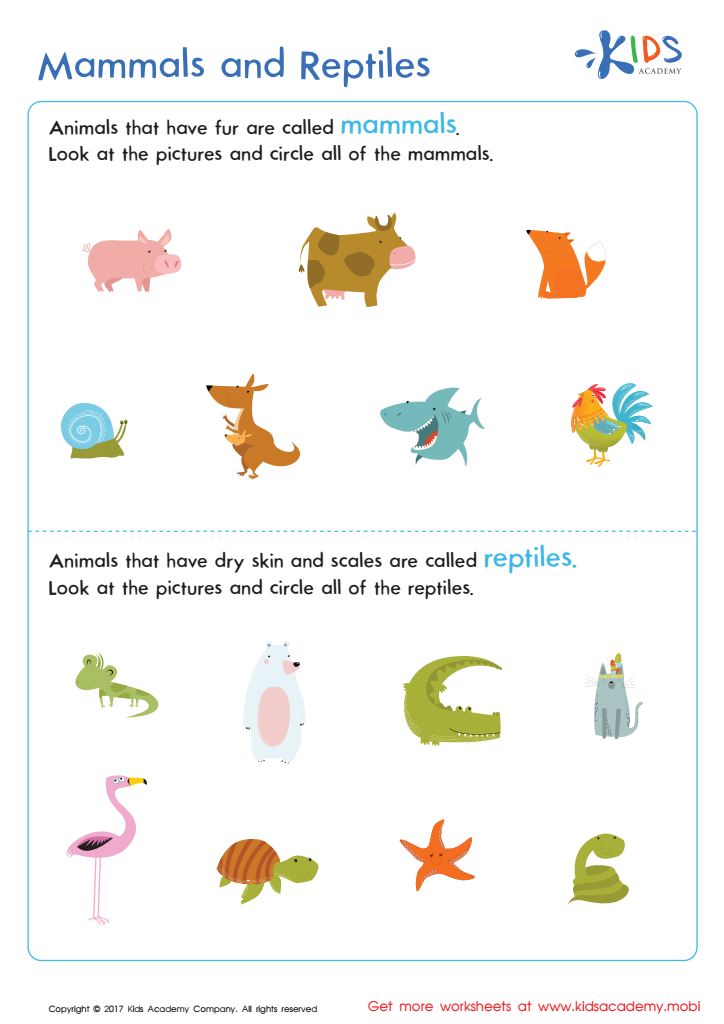

Mammals and Reptiles Worksheet
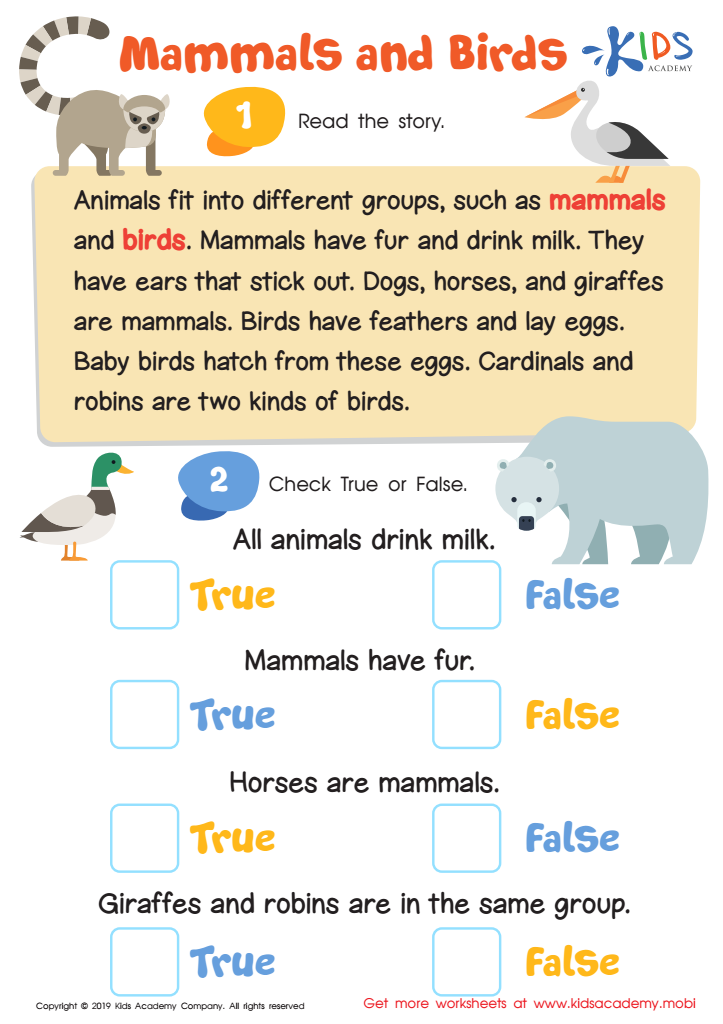

Mammals and Birds Worksheet
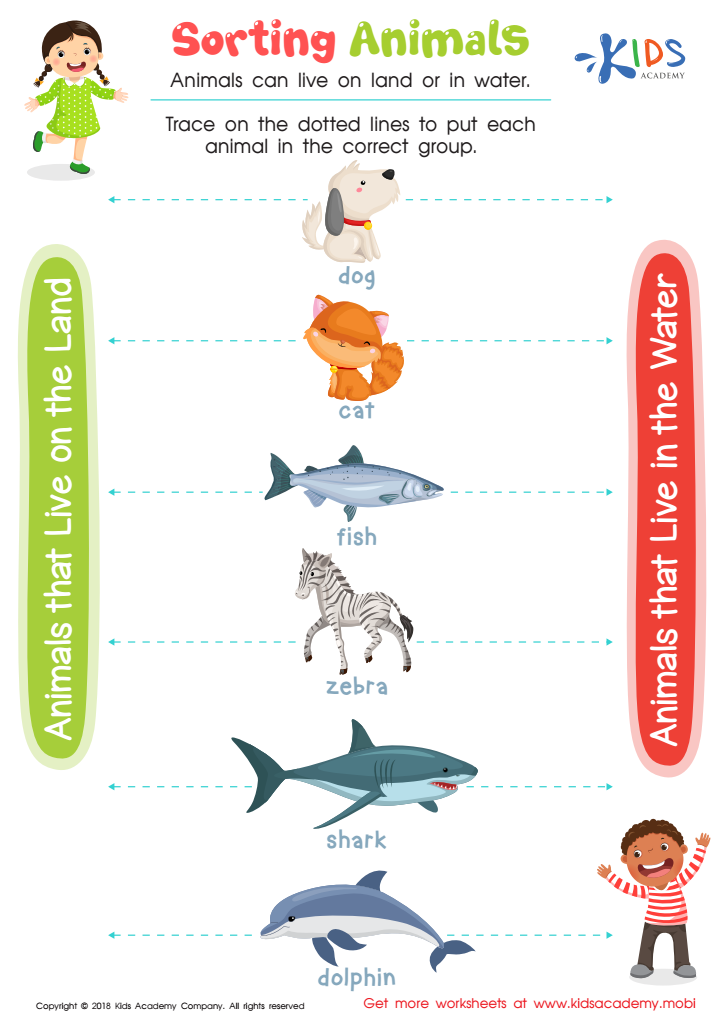

Sorting Animals Worksheet
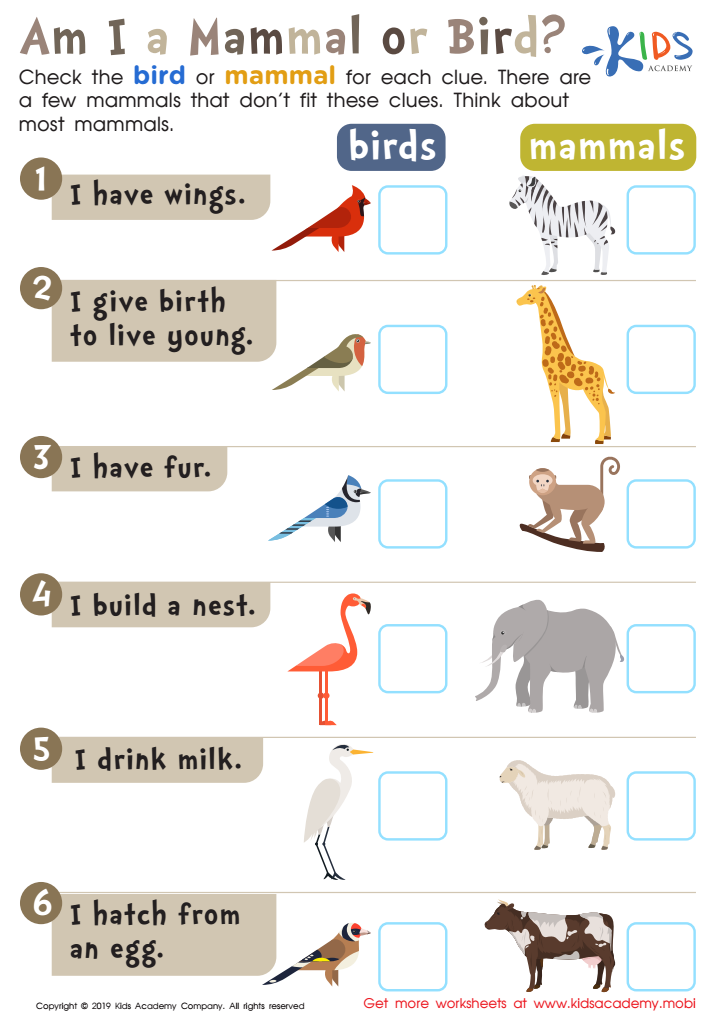

Am I a Mammal or Bird? Worksheet
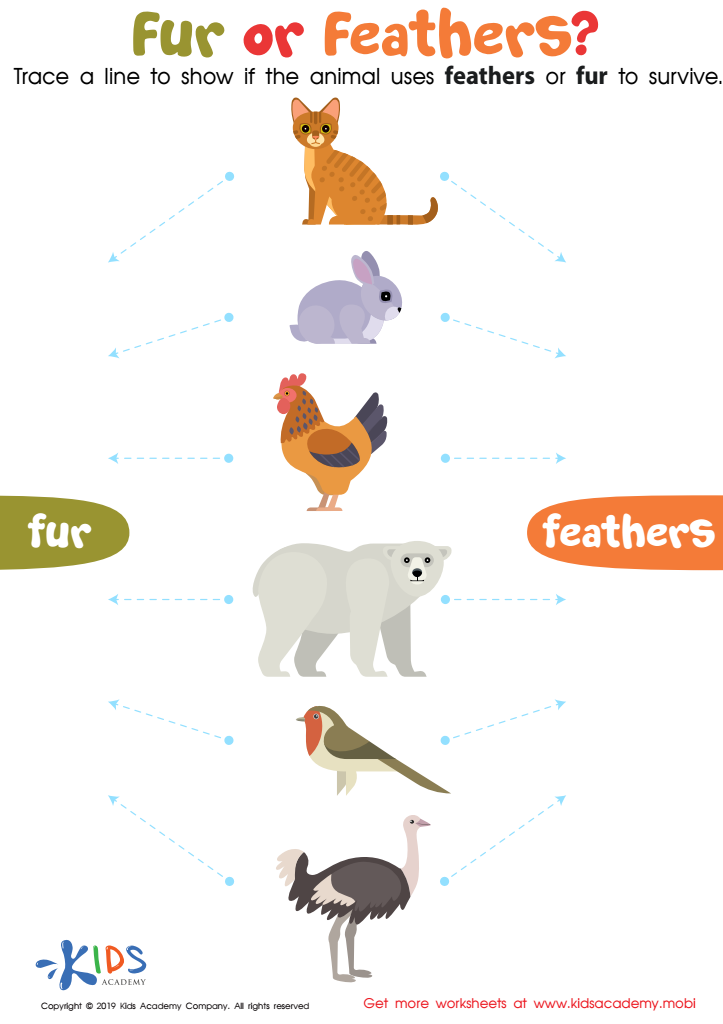

Fur or Feathers? Worksheet
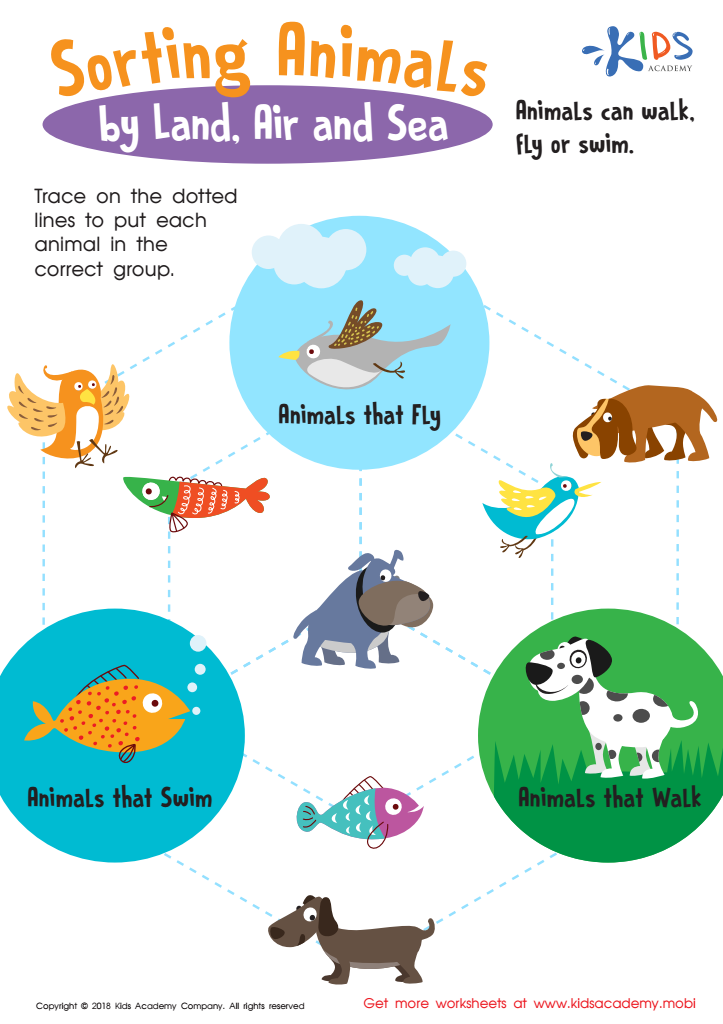

Sorting Animals by Land, Air and Sea Worksheet
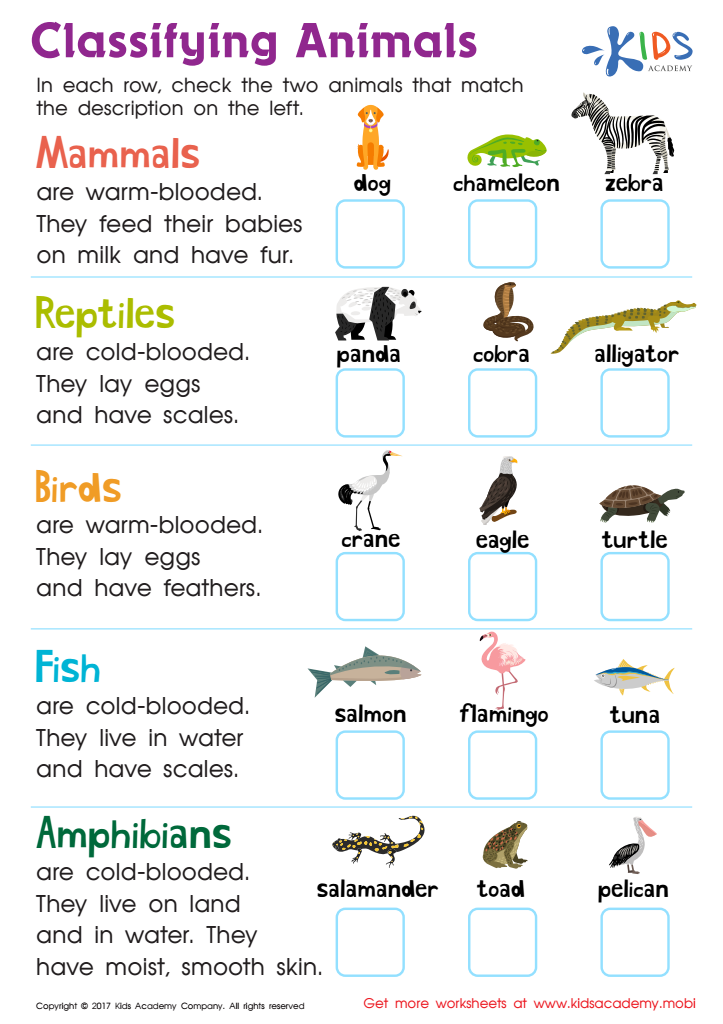

Classifying Animals Worksheet
Learning about animal classification is important for children aged 6-9 as it lays the foundation for their understanding of the natural world. Firstly, it fosters curiosity and a sense of wonder about the diverse living creatures, helping children appreciate wildlife and their habitats. Through classification, kids learn that animals are grouped based on shared characteristics such as their diet, where they live, and their physical features. This knowledge encourages critical thinking as children begin to categorize animals themselves.
Furthermore, understanding animal classification can spark discussions about ecosystems, teaching kids about interdependence, conservation, and environmental responsibility, which are vital concepts in today’s world. It promotes empathy towards animals as they learn about the various roles species play in nature.
Engaging in activities related to animal classification—like sorting animals or creating poster boards—also enhances fine motor skills and encourages teamwork when done in groups. For parents and teachers, integrating animal classification into lessons not only keeps learning fun and interactive but also helps nurture future scientists and informed citizens who value biodiversity and the environment. Ultimately, understanding animal classification enriches children’s knowledge and connection to the planet, setting the groundwork for lifelong learning and stewardship.

 Assign to My Students
Assign to My Students






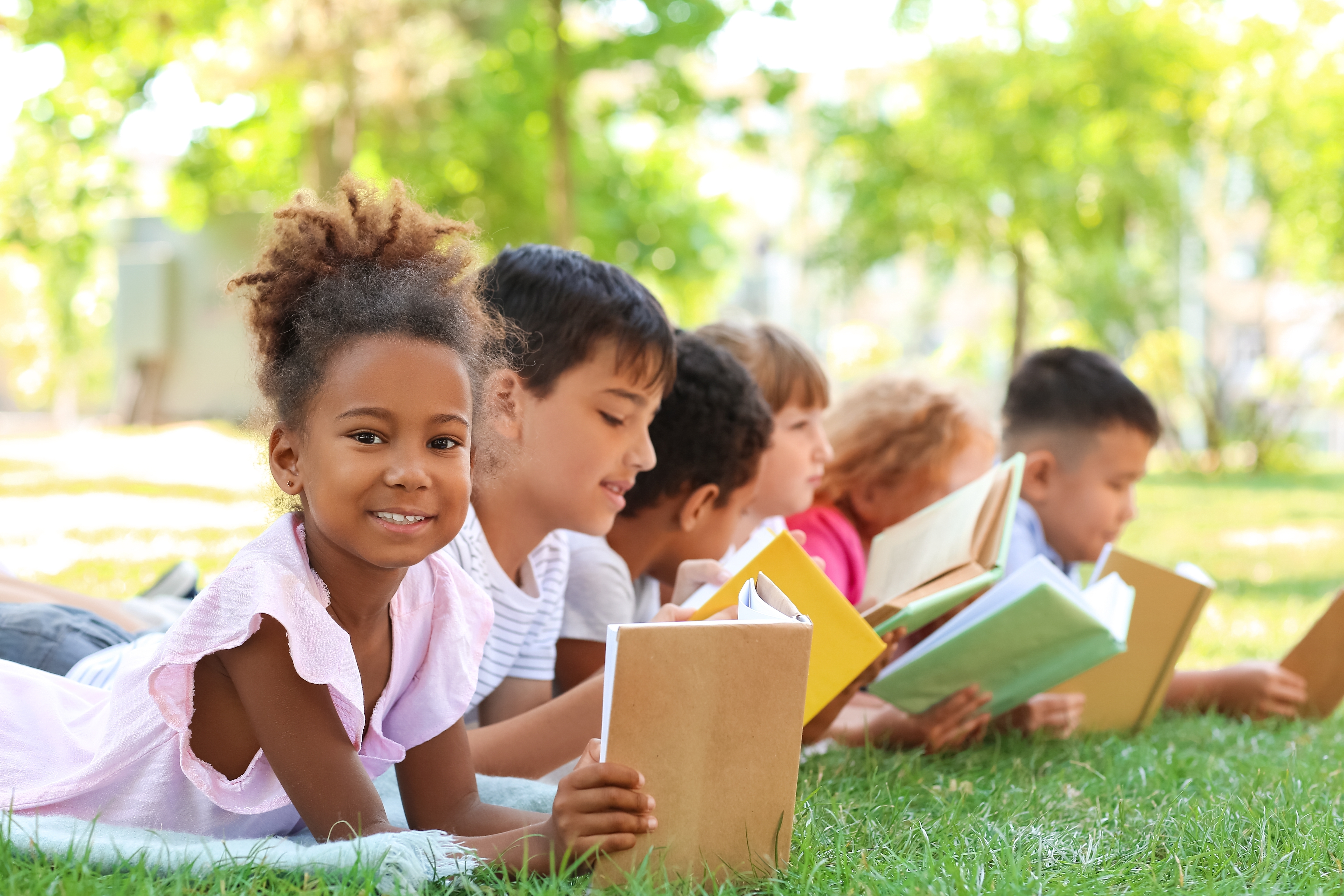



%20(1).jpg)

